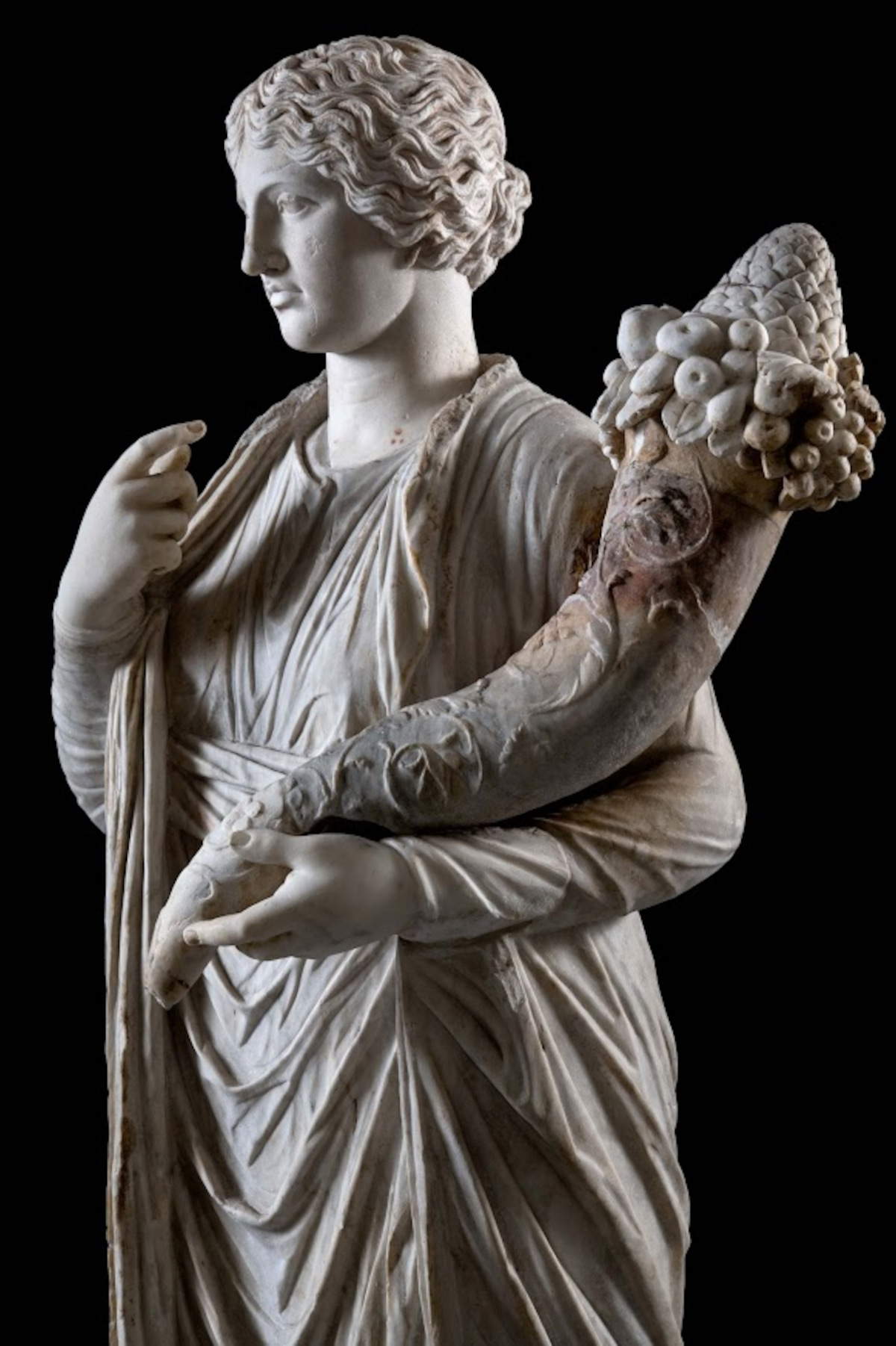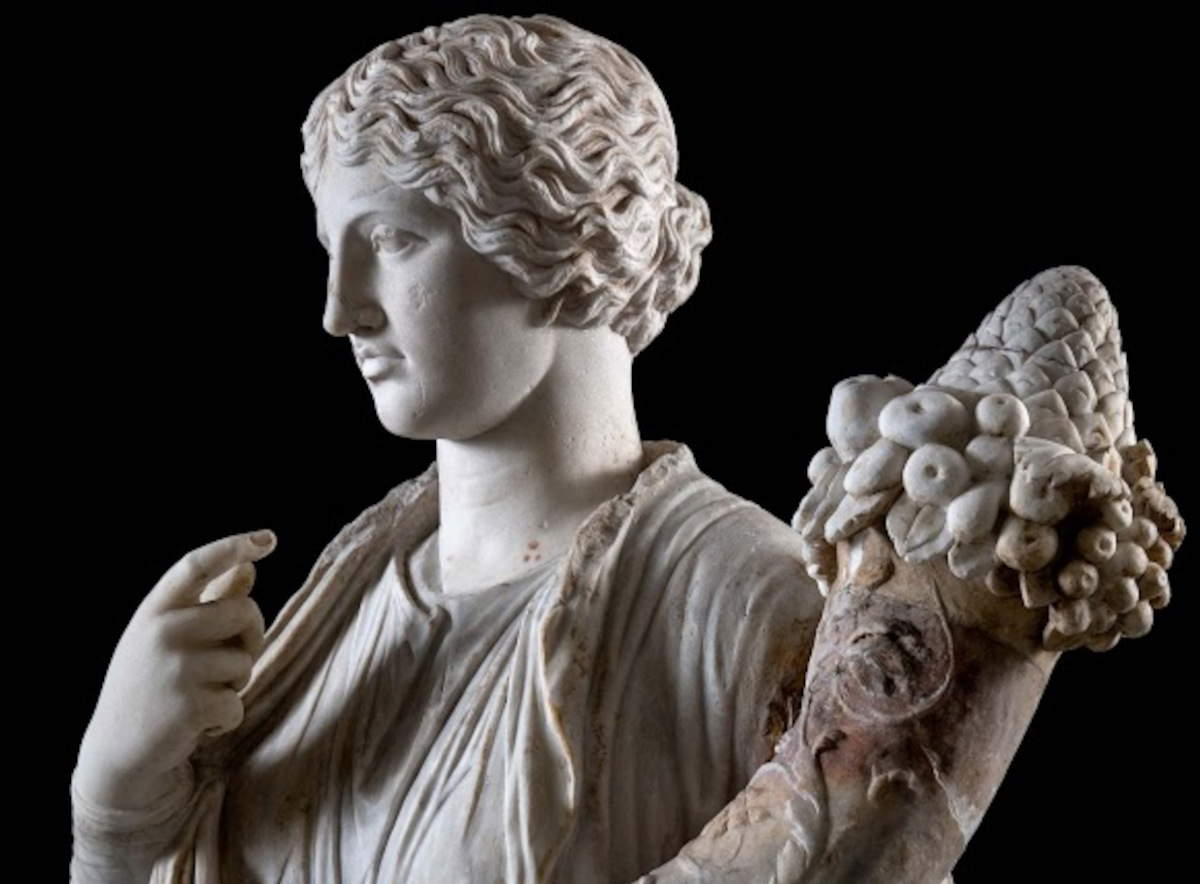From May 8 to September 28, 2025, the Aosta MegaMuseum will host the exhibition Aosta and Pompeii. Reflections of Augustan Concord at the Origins of the Empire, curated by Patrizia Fortini and Cristiano Benedetto De Vita. The event is part of the 2050th anniversary of the founding of Augusta Praetoria Salassorum, today’s Aosta, founded in 25 B.C. under Emperor Augustus. This anniversary provides an opportunity to rediscover the city as an emblematic example of the Roman ability to adapt cultural, social and urban models to specific geographical contexts.
The exhibition aims to compare two seemingly distant cities, but both fundamental to the Augustan project of creating a shared civilization from the variety of the Empire. Founded at a strategic point, Aosta emerges as an urban planning model and instrument of territorial control, a symbol of political and organizational integration. Pompeii, with its rich material and symbolic heritage, reflects convinced adherence to the ideals of Augustus, well represented by the statue of the goddess Concordia Augusta, a symbol of social harmony and cohesion among peoples.
Through artifacts, works of art and objects of daily life from both cities, the exhibition aims to reconstruct a fresco of the origins of the Empire, showing how the unification project promoted by Augustus was able to weave politics, culture and religion into a collective narrative capable of spanning the centuries.
One of the exhibition’s central elements is the highlighting of Aosta’s role within the Roman Empire. Located along a key artery between Italy and northern Europe, the city is presented as a virtuous example of urban planning in an area of high strategic importance.
The comparison with Pompeii, the second protagonist of the exhibition itinerary, highlights how Augustus’ imperial vision represented the ideological glue of the Empire: a process of harmonization of local identities aimed at building a single cultural and political entity, the Roman one. Against this backdrop, the inhabitants of Augusta Praetoria and Pompeii, although geographically distant, share common Augustan-era customs, lifestyle and cultural values. Both cities underwent important transformations during the early empire period, both from an urban and social point of view.
The exhibition’s itinerary therefore aims to investigate the relations between two coeval realities, united by the figure and reforming action of the emperor Augustus. The exhibits include statues, frescoes, epigraphs, everyday utensils and ritual objects from the Pompeian and Augustan contexts. These are joined by loans from other major Italian institutions, including the Archaeological Park of Pompeii, the National Archaeological Museum of Naples, the Archaeological Park of the Colosseum, the Capitoline Museums, the National Archaeological Museum of Ancona, the Archaeological Parks of Paestum and Velia, and the National Archaeological Museum of Aquileia.
The symbolic work of the exhibition is the statue of Concordia Augusta, from the portico of Eumachia near the Forum of Pompeii and kindly on loan from the National Archaeological Museum of Naples. Its significance, strongly linked to the concepts of Concordia and Pax Romana, recalls the figure of Octavian Augustus as a guarantor of military and civic pacification.

The exhibition also devotes ample space to unpublished materials found during recent excavation campaigns in and around Aosta that offer new perspectives on the role of the Roman colony. Finds from high-altitude encampments, such as those at Col Fetita and Col Citrin, are particularly significant: among the finds are frombola bullets, arrowheads, fragments of military footwear and shields, which tell the story of the phases of the Roman conquest and the strategic importance of the region at a crucial time in the transformation of the Roman world and Europe.
“This wide-ranging, unprecedented exhibition,” says Councillor Jean Pierre Guichardaz, “made possible thanks to loans from major Italian institutions, is presented in a museum site that is unique in Europe in terms of interest and extension, rich in history and evidence of the past. The Aosta MegaMuseum represents an expanding cultural reality of great importance for our region, which we intend to promote and enhance. We hope that culture will increasingly become the engine of our growth and that the celebrations for the 2050th anniversary of the Roman city, which see a synergic work between our Regional Department and the Municipality of Aosta, can be appreciated by the Valdostani but also by tourists and a large and international audience.”
The following scientific committee contributed to the realization of the exhibition: Patrizia Fortini, Cristiano Benedetto De Vita, Daria Jorioz, Alessandra Armirotti, Luigi Capogrossi Colognesi, Patrizio Pensabene, Maria Chiara Scappaticcio, Giuseppe Scarpati, and Elena Tassi Scandone.
The exhibition, which can be visited Tuesday through Sunday from 9 a.m. to 7 p.m., is accompanied by a bilingual Italian-French catalog published by Franco Cosimo Panini Editore.
 |
| Aosta, from Naples to exhibit Concordia Augusta statue for city's 2050th anniversary |
Warning: the translation into English of the original Italian article was created using automatic tools. We undertake to review all articles, but we do not guarantee the total absence of inaccuracies in the translation due to the program. You can find the original by clicking on the ITA button. If you find any mistake,please contact us.